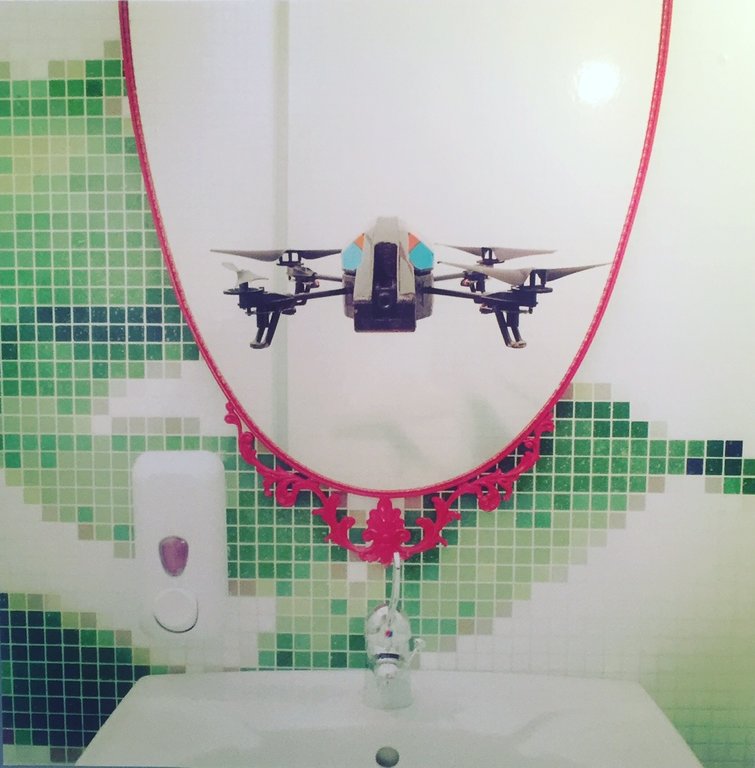Inter/Access is an artist-run center dedicated to exhibiting artists who push the boundaries of technology in their practices. The theme of drones allows artists to specifically explore accessibility of technology, warfare, mapping and surveillance. Most of the artworks refer to the military development and use of drones for mass surveillance and warfare. Morgan Skinner’s video work titled “Gorgon Stare” is titled after the US military’s Reaper Drone used for surveillance of large areas. On one screen, nine windows present aerial footage of drone attacks and bombings alongside video game footage of war from Battlefield 4. Not only is drone footage troublingly familiar and difficult to discern from the virtual experience, the juxtaposition of the real with the virtual demonstrates how iconic scenes of horrific warfare pervade our comfortable popular culture.
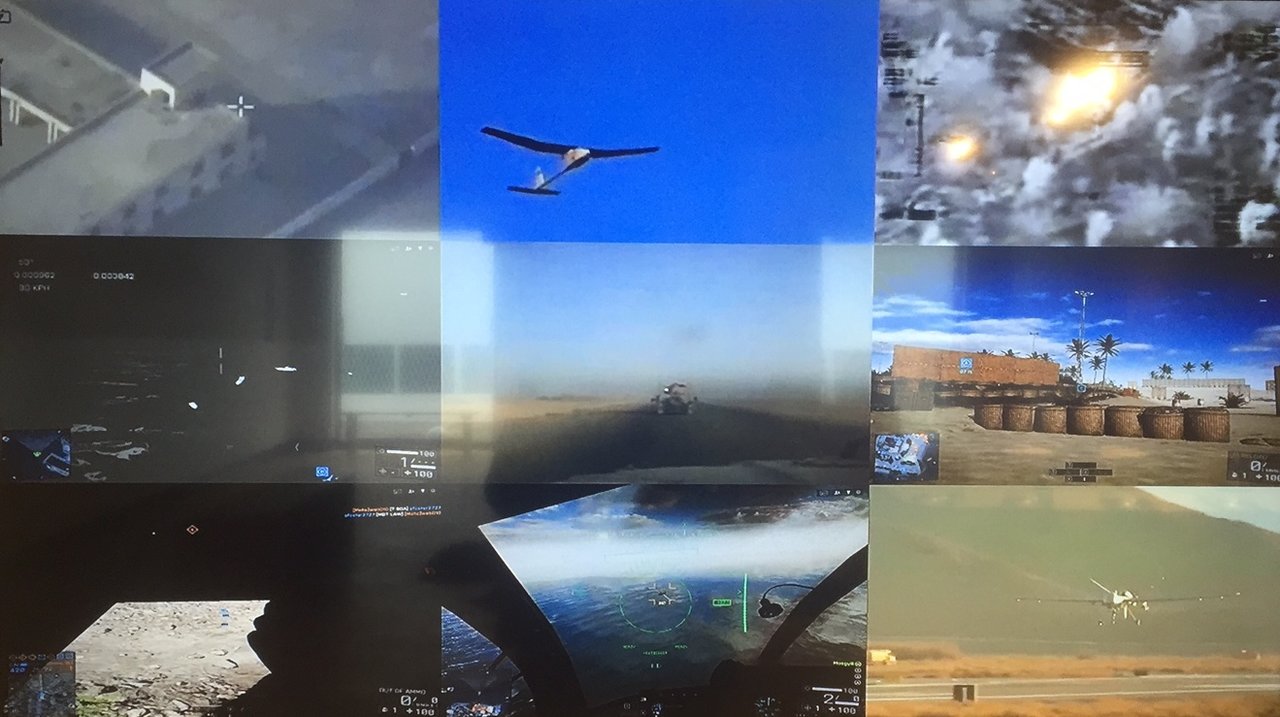 Morgan Skinner, Gorgon Stare, 2016
Morgan Skinner, Gorgon Stare, 2016
Mona Kamal’s carpet titled “Drones in Waziristan” also confronts the sad reality of war, and our privilege that through technology we may remain far away. Kamal removes the fabric from carpet to document the dates of drone attacks while also emulating the loss of these events through the process of removal. We are invited to take off our shoes and walk on the work to feel our distance from the actual events.
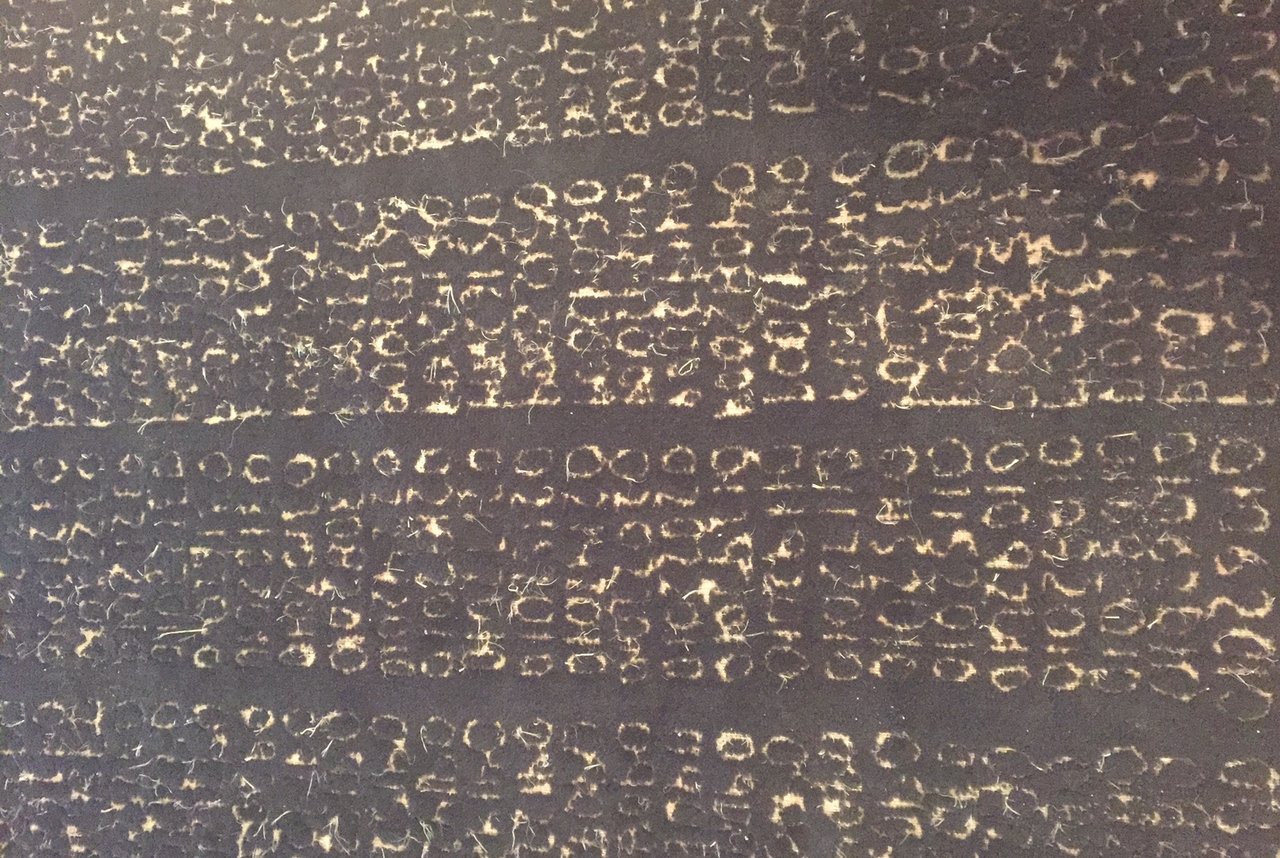 Mona Kamal, Drones in Waziristan (detail), 2015, Synthetic Carpet
Mona Kamal, Drones in Waziristan (detail), 2015, Synthetic Carpet
IOCOSE imagines the lives of drones dispatched from military and surveillance work during times of peace. In one scenario, the drones are athletes of the 100 m race – an activity being developed in reality for recreational drone owners. In another scenario, drones are portrayed in moments of vain boredom, turning their surveillance technology onto themselves to take domestic selfies. Exploring drones as a means of surveillance, Lawrence Bird’s video of Google satellite images simulate a tour of the US-Canada border, a man-made mark on the natural landscape.
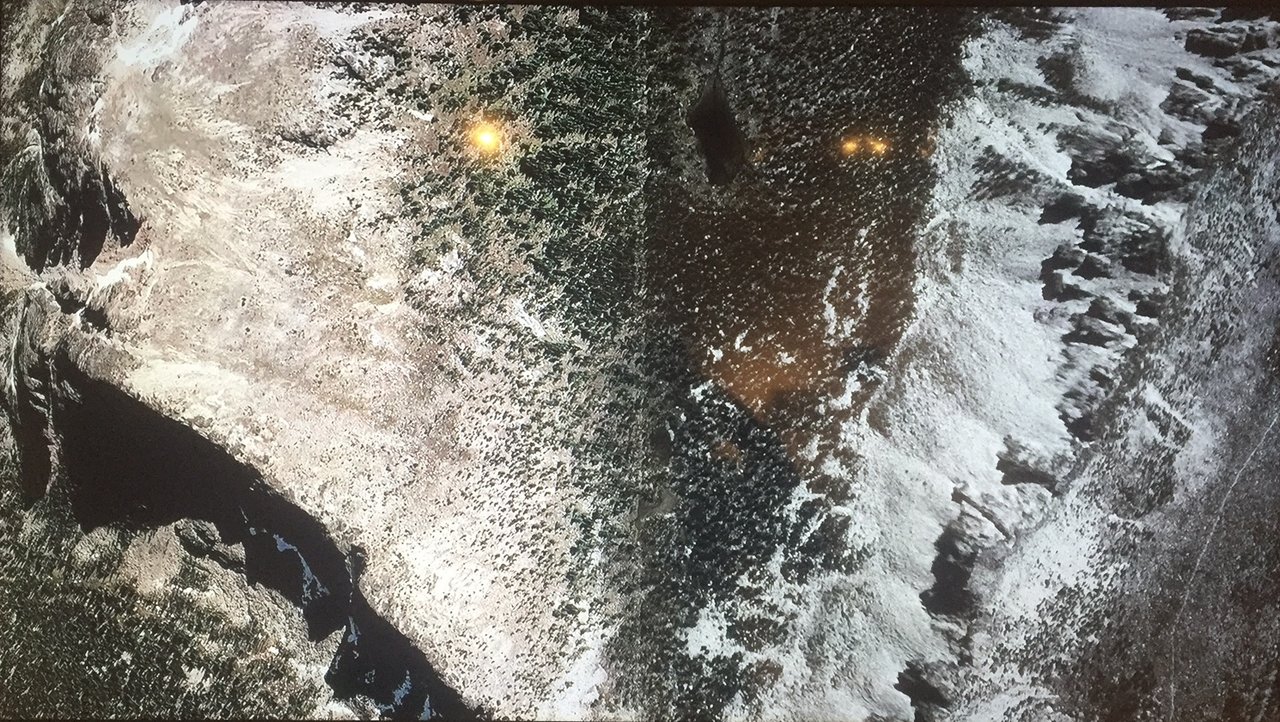 Lawrence Bird, Parallel 3, 2016
Lawrence Bird, Parallel 3, 2016
Rather than political patrol, David Bowen’s acrylic sculptures demonstrate how surveillance technology can be used to document landscape at the mercy of tumultuous weather. His five sculptures, carved from a CNC router and set atop a plinth are models of the same co-ordinates over lake Superior during different weather conditions. Bowen’s work, next to Joe Ford’s sculptures, creates an incredible dynamic between man-made privacy and the vulnerability of nature. Ford’s geometric plywood and grip tape sculptures, titled “Dead Pixels,” arranged on the floor present an aerial experience of a suburban neighborhood.
![]() Installation shot with Joe Ford, Dead Pixels (on the floor) and David Bowen’s sculptures
Installation shot with Joe Ford, Dead Pixels (on the floor) and David Bowen’s sculptures
The theme of pixelization used to communicate distance and also to communicate a means for privacy and censorship brings to mind essays and video works by the artist and writer Hito Steyerl. Pixelization is a means to escape the mutual mass surveillance and Google gaze, but to run away from video is not the most productive answer. The work “DIY (Drone it Yourself) v1.0” by Jasper van Loenen, presents an alternative proactive position. The democratizing effort of van Loenen includes 3D printable STL files, readily available electronic parts, and open source controller to make drone technology accessible to everyone.
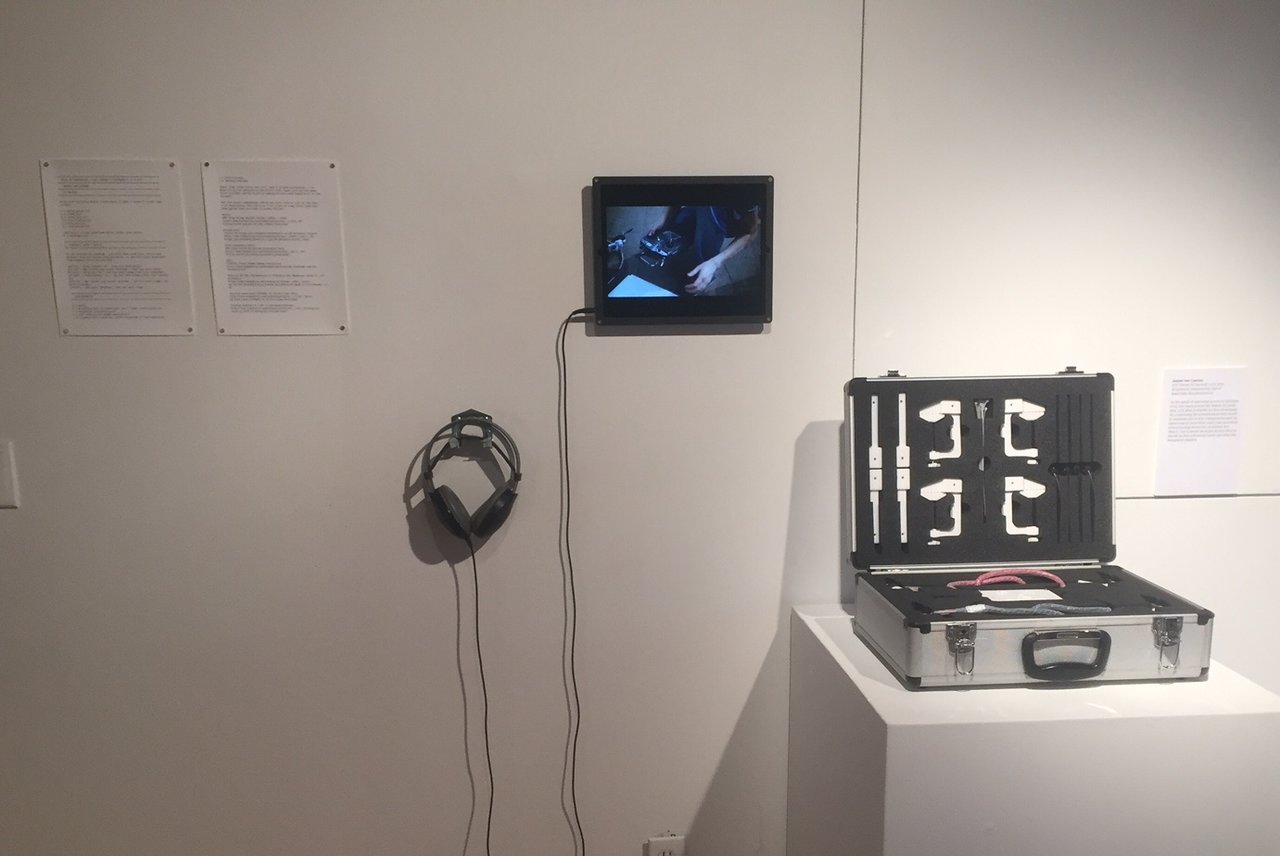 Jasper van Loenen, DIY (Drone it Yourself) v1.0, 2013, 3D printed components, bill of materials, documentation
Jasper van Loenen, DIY (Drone it Yourself) v1.0, 2013, 3D printed components, bill of materials, documentation
The works at Inter/Access are politically charged appropriations of tools used widely for warfare and surveillance, and also playful interpretations of their potential everyday use.
Text and photo: Alice Pelot
*Exhibition information: Once is Nothing: A Drone Art Exhibition – a group show by Lawrence Bird, David Bowen, IOCOSE, Joe Ford, Mona Kamal, Morgan Skinner, Jasper van Loenen, February 17 – April 2, 2016, Inter/Access, 9 Ossington Avenue, Toronto. Gallery hours: Tue – Sat: 11 am – 6 pm.
Featured image: Installation view with IOCOSE, In Times of Peace, 2014

